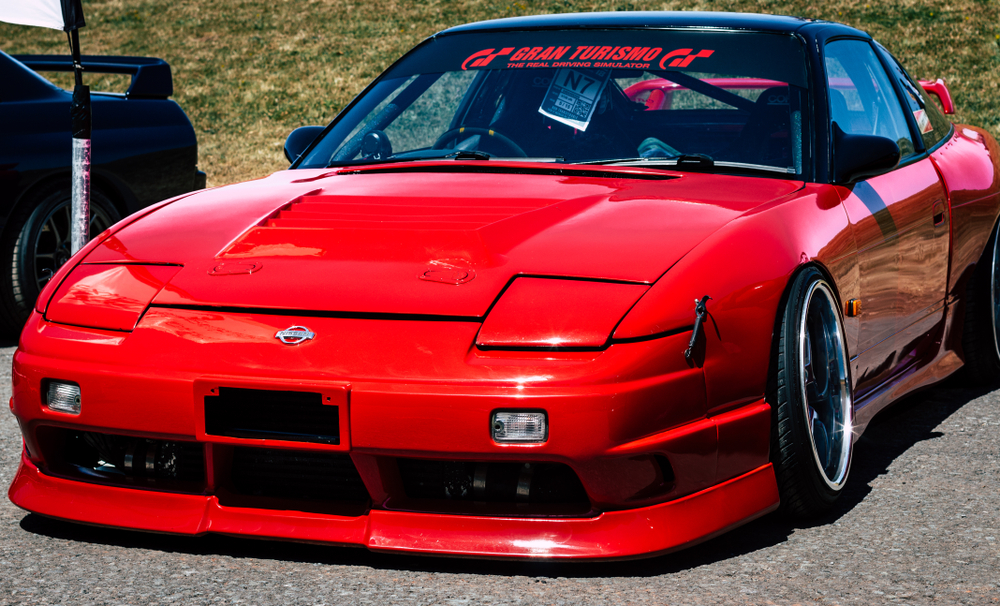Is The Nissan 240sx A True Sports Car? Performance Breakdown

The Nissan 240SX. Just uttering the name evokes images of sideways action, roaring engines, and a vibrant tuner culture. But beneath the hype, the custom builds, and the drift videos, lies a fundamental question: Is the Nissan 240SX a true sports car? Let's dissect the 240SX, analyze its performance characteristics, and examine its design to arrive at a reasoned conclusion.
Defining "Sports Car": A Subjective Starting Point
Before we can judge the 240SX, we need a working definition of "sports car." It's a term often loosely applied, so let's establish some key characteristics:
- Performance-oriented Design: Emphasis on handling, acceleration, and braking.
- Rear-Wheel Drive (RWD): Favored for its balance and ability to deliver power to the rear wheels for optimal handling.
- Lightweight Construction: Reducing weight improves agility and responsiveness.
- Responsive Steering and Suspension: Providing direct feedback and control to the driver.
- Driver Engagement: A connection between the driver and the machine, fostering a rewarding experience.
While not every sports car adheres to all of these criteria perfectly, they represent the core ideals. Now, let's see how the 240SX stacks up.
The 240SX: A Technical Deep Dive
Chassis and Suspension
The S13 and S14 generations of the 240SX boast a relatively lightweight unibody construction. While not as featherlight as some dedicated sports cars, it was significantly lighter than many of its contemporaries. The front suspension employed MacPherson struts, a cost-effective but capable design. However, the real magic lies in the multi-link rear suspension. This independent setup provided excellent wheel control and allowed for sophisticated tuning to optimize handling characteristics.
The multi-link design allowed for adjustments to camber, toe, and caster, allowing enthusiasts to fine-tune the suspension for various driving conditions, from grip-focused track days to drift-oriented setups. This adjustability is a key factor in the 240SX's appeal and performance potential.
The multi-link rear suspension was a standout feature, providing a significant advantage in handling and adjustability.
Engine and Drivetrain
The 240SX was primarily equipped with the KA24E (single overhead cam) and KA24DE (dual overhead cam) 2.4-liter inline-four engines. These engines, while not particularly powerful in stock form (ranging from 140-155 horsepower), were known for their robustness and reliability. More importantly, they were remarkably easy to modify.
The availability of aftermarket turbocharger kits, engine management systems, and performance parts transformed the KA24DE into a potent powerplant capable of producing significantly higher horsepower figures. The robust bottom end of the KA24 engine made it a popular choice for forced induction builds.
The transmission, a five-speed manual (with an optional four-speed automatic), was generally regarded as durable and offered relatively short throws, contributing to a sporty feel. The RWD configuration, of course, is a cornerstone of the 240SX's sporting credentials. The rear differential, though often open in stock form, was easily upgraded to a limited-slip differential (LSD) for improved traction and cornering performance.
Steering and Brakes
The power-assisted rack-and-pinion steering provided a decent level of feedback, although some enthusiasts found it slightly over-assisted. Upgrading to a higher-ratio steering rack was a common modification to enhance responsiveness and reduce steering input. The braking system, while adequate for stock power levels, often required upgrades (larger rotors, calipers, and pads) to handle the increased performance of modified engines.
Weight Distribution and Handling
The 240SX benefited from a near-ideal weight distribution (approximately 55/45 front/rear), contributing to its balanced handling characteristics. This balance, combined with the multi-link rear suspension, made the 240SX remarkably predictable and controllable, even at the limit. The car exhibited neutral handling characteristics, meaning it could be easily steered with the throttle, making it a favorite among drifters and track enthusiasts alike.
Performance Figures: Stock vs. Modified
In stock form, the 240SX wasn't a speed demon. Expect 0-60 mph times in the 7-8 second range, and a quarter-mile time in the mid-15s. However, these figures are hardly representative of the 240SX's true potential. With even modest modifications, such as a turbocharger and engine management system, the 240SX could easily surpass these numbers. A properly built 240SX can achieve 0-60 mph times in the low 5-second range and quarter-mile times in the low 13s, rivaling contemporary sports cars.
Beyond straight-line speed, the 240SX's handling prowess truly shines. Its balanced chassis, responsive steering, and adjustable suspension allowed it to excel in cornering. A well-tuned 240SX could easily outmaneuver more powerful cars on a twisty road or racetrack.
The "Drift Tax" and Its Impact
The popularity of the 240SX among drifters has significantly impacted its availability and price. The "drift tax," as it's often called, refers to the inflated prices of 240SX models due to their desirability in the drifting community. While this has made finding a clean, unmolested example more challenging, it also underscores the car's inherent capabilities as a performance machine.
Conclusion: A Sports Car with Potential Realized
So, is the Nissan 240SX a true sports car? The answer is nuanced. In its stock configuration, it's more of a sporty coupe than a dedicated sports car. Its power output is relatively modest, and its brakes and steering could benefit from improvement. However, the 240SX possesses all the fundamental characteristics of a sports car: RWD, a relatively lightweight chassis, a balanced weight distribution, and a responsive suspension. Most importantly, it offers exceptional potential for modification and customization.
The 240SX's true strength lies in its transformative potential. With the right modifications, it can be elevated to a level of performance that rivals or surpasses many purpose-built sports cars. Its inherent balance, adjustability, and affordability make it a remarkably versatile platform for enthusiasts to build their dream machine, whether it's a grip-focused track weapon or a tire-shredding drift monster.
Therefore, the Nissan 240SX, while not a pure sports car out of the box, is undoubtedly a sports car in spirit. Its potential, when realized through thoughtful modifications and dedicated tuning, solidifies its place in automotive history as a truly iconic performance machine.
